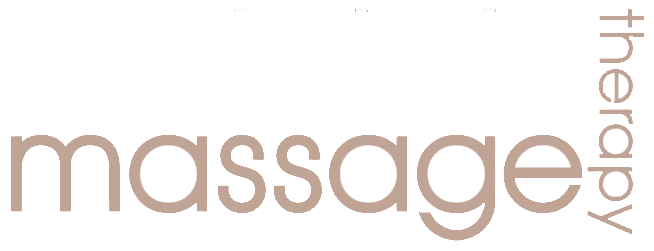As we know now, all organs and tissue in our body exhibit piezoelectric properties, but what theoretical and practical value does this information have for the practitioners and massage therapy profession in general? Why do we spend time even discussing this matter? Here are the answers to these questions.
The seemingly theoretical concept  of piezoelectricity has great clinical value for the massage practitioners. Massage therapy is a way to deliver mechanical stimuli to the soft tissue and one of its great clinical outcomes is generation of the piezoelectrical potentials in the massaged area.
of piezoelectricity has great clinical value for the massage practitioners. Massage therapy is a way to deliver mechanical stimuli to the soft tissue and one of its great clinical outcomes is generation of the piezoelectrical potentials in the massaged area.
As an example, review the impact of massage therapy strokes on collagen. As mentioned, the collagen fibers are the most important and abundant in our body. They form the structural frame of all organs and tissue and are a major repair material used to restore tissue after any trauma or inflammation.
Each collagen molecule is a strong dipole, i.e. it has two oppositely charged ends. The head is bigger part and it has a slightly larger positive charge, while the tail is smaller and it has a slightly smaller negative charge. Thus overall charge of each collagen molecule is positive.
Collagen molecules unite together to form different anatomical structures (tendons, ligaments, bones, structural frame of the inner organs, etc.). All collagen molecules in combination with other electrically active proteins generate a, so called, fixed electric charge of each organ and tissue.
Thus, the fixed electric charge is a cumulative charge of all electrically active molecules in the area. Even under normal conditions this charge constantly changes as a result of the individual person’s physical activity, diet, level of stress, etc. Despite of these constant fluctuations, changes in the fixed electric charge stay within the physiological range assigned to this particular tissue.
The situation changes dramatically if the soft tissue or inner organ were traumatized, or has developed inflammation, etc. The fixed electric charge within the affected area immediately changes its normal value as a result of the pathological process.
Any inflammation or trauma of the soft tissue increases the positive fixed electric charge and the collagen fibers are one of the major contributors to this process. Swelling, rupture and twisting of the normal collagen fibers greatly contribute to the increase of the positive fixed charge in the soft tissue. The healing process after initial trauma or inflammation is always accompanied by slow restoration of the fixed electric charge in the affected area.
During the massage, external mechanical stimuli in form of repeated application of massage strokes deform the collagen molecules and generate the piezoelectricity which increases the negative fixed electric charge. As we discussed above, the negative electric charge has the greatest impact on the proliferation, growth and regeneration of the tissue.
Also, the increase of the negative charge in the affected area is the critical factor in the correct alignment of the pro-collagen fibers before their maturation into the fully developed collagen fibers. The delay of this process slows the local healing. Thus the restoration of the fixed electric charge is a critically important process in reducing the tension in the soft tissue and eliminating the physical and even mental stress. At the same time it is an equally important component in speeding up the healing process.
The concept of piezoelectricity gives the practitioners a lot of important clinical tools to apply therapy correctly and optimize the outcomes of the treatment. For example the study conducted by Shamos and Lavine in 1967 showed that human skin exhibits the largest piezoelectrical potentials if the mechanical stimuli are applied under a 45 degree angle. This is a very important practical recommendation, as the massage practitioner needs to generate the greatest number of piezoelectrical potentials during the treatment.
Let’s compare the common application of effleurage and friction strokes with the application of the same strokes using a 45 degree angle. The video below presents the application of both techniques.
application of effleurage and friction strokes with the application of the same strokes using a 45 degree angle. The video below presents the application of both techniques.
If the practitioner wants to optimize performance and enhance healing potential of the therapy he or she needs simply change the angle of the applied strokes and this factor alone without even learning additional massage techniques will greatly help practitioner to build up successful practice.
Modern technology allowed scientists to measure the piezoelectrical properties even within a single collagen fiber. In the recent study Minary-Jolandan and Yu, (2009) showed that single collagen fiber is able to generate piezoelectric coefficient of 1 pm V(-1) and summation of piezoelectrical charges generated by each collagen fiber allow the entire tendon to generate electric potential up to tens of millivolts, depending upon the size of the tendon. The authors of this study strongly reinforced the previously mentioned publication of Shamos and Lavine who found that only shear deformation of the collagen fibers triggers the piezoelectrical effect. Thus the angle of the application of the pressure during the massage strokes (45 degrees are the most preferable) is a critical factor in the generation of the piezoelectricity and normalization of the electrophysiological properties of the soft tissue.
A very important article for massage practitioners was published in 1977 by one of the most respected scientific authorities in the field of bioelectricity Professor B. Lipinski, MD. Using his experimental data he formulated the theory which links the therapeutic effect of soft tissue manipulations, acupuncture, Hatha Yoga and the action of negatively charged air ions with piezoelectrical properties of the biological tissue.
According to this theory, proteins, mucopolysaccahrides, nucleic acids, etc. which compose all tissue of our body are able to generate piezoelectricity. Thus, these substances have the ability to transfer the externally applied mechanical energy (e.g. by massage strokes) into electric energy inside the soft tissue.
The author showed that stimulation of the soft tissue in the special areas on the body produces the electric current. This piezoelectrically induced current activates the healing processes in the stimulated area, and it is able to flow “towards the internal organs along the semiconductive channels of biological micromolecules”.
Hence, every time you apply mechanical pressure to the soft tissue in the form of massage strokes you actively produce the electric current in these tissues, and it has enormous healing potential on the cellular, tissue and organ levels. This electric current is able to travel to the distant parts of the body, including the inner organs and normalize their function.
The healing impact of the massage treatment is directly correlated with the total amount of piezoelectrical potentials the practitioner need to generate during the therapy. If the practitioner doesn’t use correct tools and tips (e.g., angle of the strokes, speed of the strokes, greater variety of massage techniques, etc.) he or she greatly diminishes the healing outcomes of the treatment and undermines his or her efforts and practice.
Article from Science of Massage website here: http://www.scienceofmassage.com/
